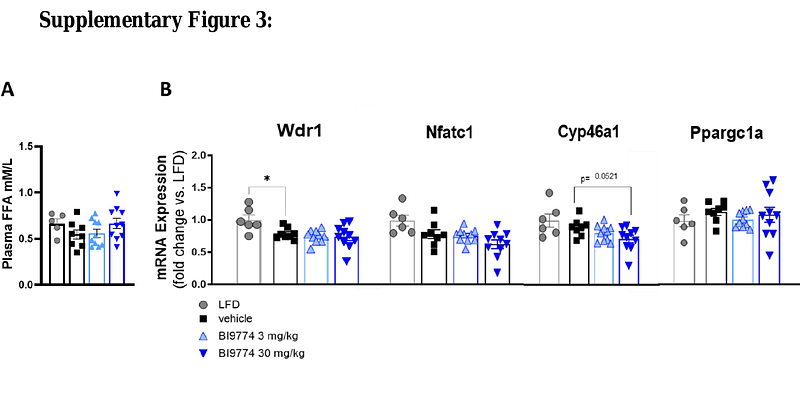Direct β1/β2 AMPK activation reduces liver steatosis but not fibrosis in a mouse model of non-alcoholic steatohepatitis

Direct β1/β2 AMPK activation reduces liver steatosis but not fibrosis in a mouse model of non-alcoholic steatohepatitis
Mather, K. M.; Boland, M. L.; Rivers, E. L.; Srivastava, A.; Schimpl, M.; Hemsley, P.; Robinson, J.; Wan, P.; Hansen, J.; Read, J. A.; Trevaskis, J. L.; Smith, D. M.
Abstract5AMP-activated protein kinase (AMPK) activators show potential for treating Non-Alcoholic Fatty Liver Disease (NAFLD) and Non-Alcoholic Steatohepatitis (NASH) due to their inhibiting effects on fatty acid and cholesterol synthesis. The absence of treatments for NASH, and its propensity for progression to severe disease, lead us to identify and characterize BI9774, a small molecule AMPK activator, which we used to evaluate this potential, including its ability to reduce the NASH specific qualities of fibrosis and inflammation in a preclinical study. Male Lepob/Lepob mice on a control or NASH inducing (AMLN) diet, with liver fibrosis were given BI9774 or vehicle for 6 weeks while metabolic and NASH endpoints were evaluated. BI9774 treatment decreased plasma ALT, terminal liver weight, and liver lipids. RNA expression of collagen-related genes decreased, although collagen protein and inflammation remained unaltered. We also observed increased heart weight and glycogen levels, and increased expression of genes associated with cardiac hypertrophy. AMPK activation improved many metabolic endpoints, but lack of significant improvement in liver fibrosis and negative cardiac effects suggest systemic AMPK activation is not an ideal NASH therapy. Reductions in steatosis and fibrosis-related genes indicate that, with extended treatment, a liver specific AMPK activator has potential to resolve hepatic fibrosis.


